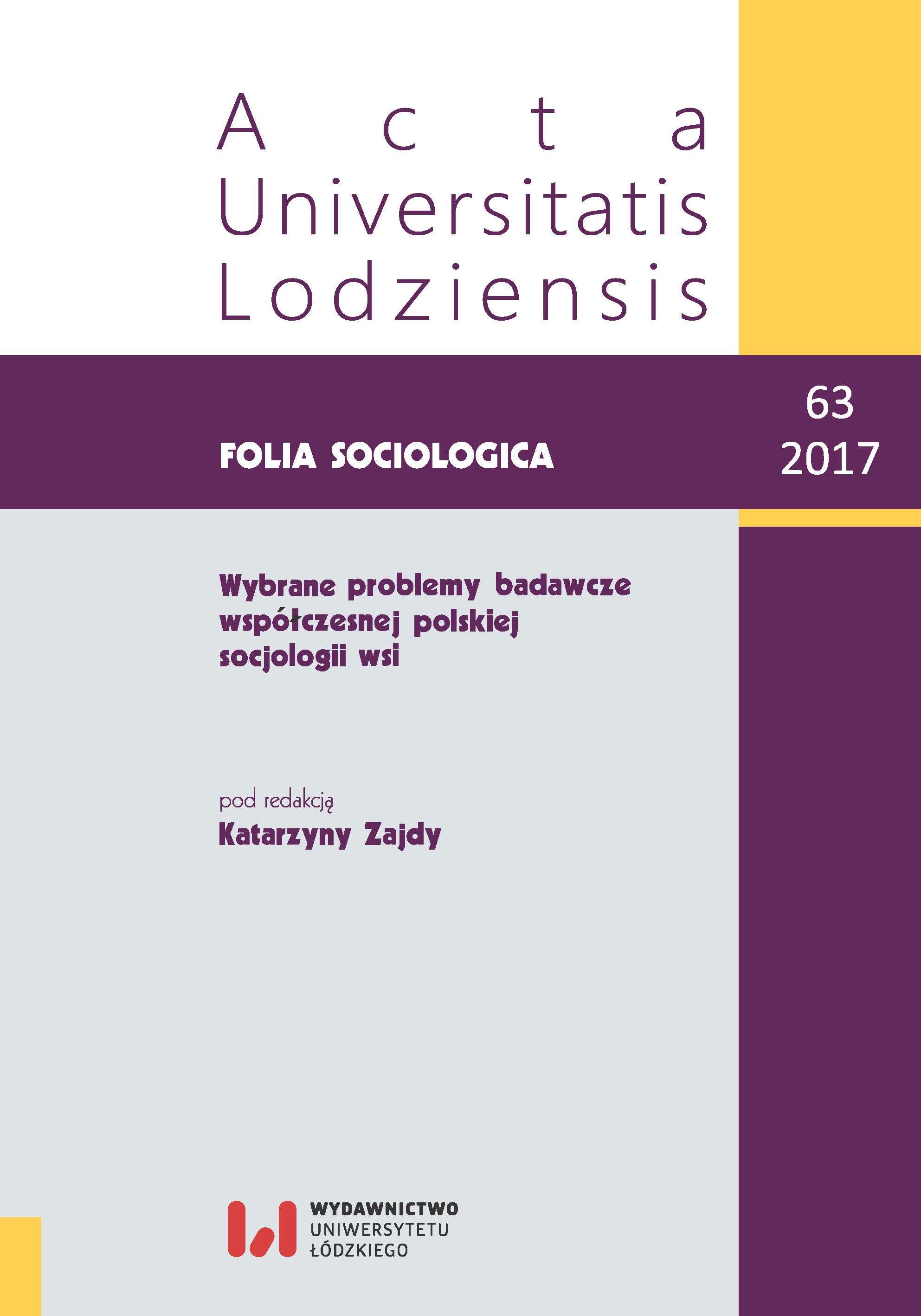Przestrzenne zróżnicowanie struktury społecznej wsi
Spatial Diversity of Rural Social Structure
Author(s): Maria HalamskaSubject(s): Sociology
Published by: Wydawnictwo Uniwersytetu Łódzkiego
Keywords: social structure; social space; desagrarisation; proletarisation; bourgeoisement; diversity of social structure; struktura społeczna; przestrzeń społeczna; dezagraryzacja; proletaryzacja; burżuazyjnie
Summary/Abstract: The social structure of the Polish countryside has deeply changed during the last thirty years because of three co-occurring processes: desagrarisation/depeasantisation, proletarisation, and bourgeoisement/gentrification. Representative studies dating from 1991, 2003, and 2013 show changes in fundamental elements of the social position of rural population, namely sources of income, education level, and professional structure. At present, the dominating segment of the social structure of the countryside is workers (45.6%), whereas ratios of farmers and of the so-called new middle class are the same (27.2% each). The spatial diversification of this structure is, however, strong, as exemplified by differences between historical regions (territories formerly belonging to Prussia, Austria, and Russia), multi-functional urbanised vs. mainly rural areas, and administrative units (voivodeships). The most important differences in social structure and the dynamics of its change are between multi-functional urbanised and mainly rural areas. // W ostatnim trzydziestoleciu struktura społeczna polskiej wsi gruntownie się zmieniła. Sprawiły to trzy, nakładające się, procesy: dezagraryzacja/depezantyzacja, proletaryzacja oraz burżuazyjnienie/gentryfikacja. Autorka, na podstawie danych z reprezentatywnych badań prowadzonych w latach 1991, 2003 oraz 2013, ukazuje zmiany w zakresie podstawowych elementów położenia społecznego ludności wiejskiej: źródeł dochodów, poziomu wykształcenia oraz struktury zawodowej. Dominującym segmentem w strukturze społecznej wsi są obecnie robotnicy (45,6%), natomiast udział rolników i tzw. nowej klasy średniej równoważy się i wynosi po 27,2%. Istnieje jednak duże przestrzenne zróżnicowanie tej struktury, co ukazane zostało na przykładzie regionów historycznych (byłe zabory), obszarów wielofunkcyjnych zurbanizowanych i głównie rolniczych oraz regionów polityczno-administracyjnych (województwa). Największe różnice w strukturze społecznej i dynamice zmian istnieją między obszarami wielofunkcyjnymi zurbanizowanymi a obszarami głównie rolniczymi.
Journal: Acta Universitatis Lodziensis. Folia Sociologica
- Issue Year: 2017
- Issue No: 63
- Page Range: 7-27
- Page Count: 21
- Language: Polish

